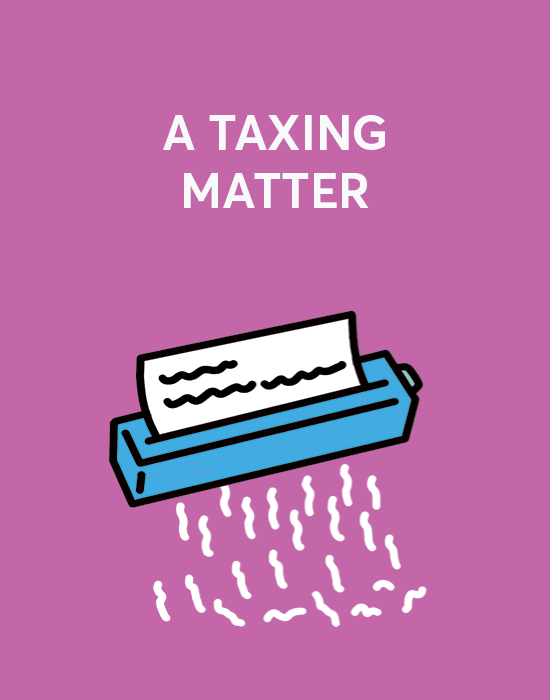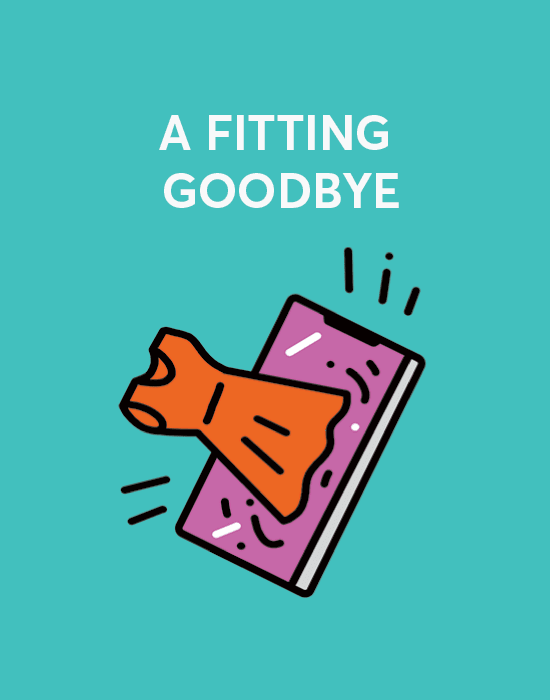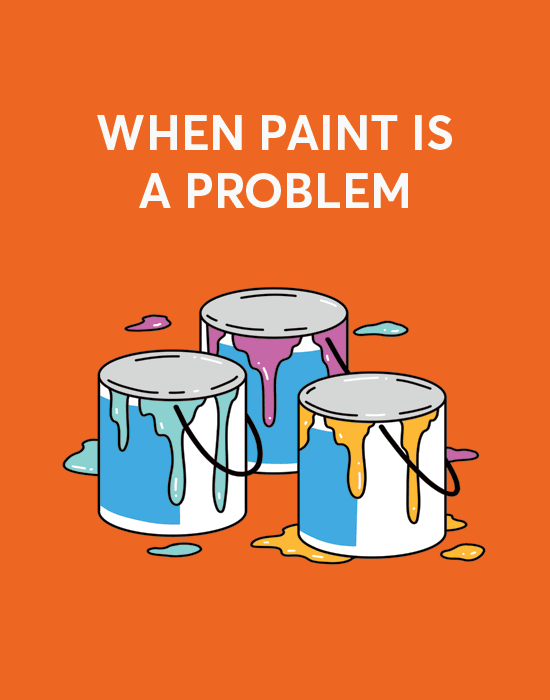
Sealed in a plastic bag in the back of Kris Schwartz’s bedroom closet is the student nurse’s uniform that her mother wore 80 years ago, complete with pinafore and removable cuffs. Her mother’s nursing cape hangs in a downstairs closet, and a journal her mother-in-law kept is safely stashed in the desk drawer of a home office. These relics are just a metaphorical speck in the “tsunami of stuff” Schwartz says she and her husband have accumulated in their Maine home over the decades.
“I have loads of books, mementos, baby clothes, and letters from people I’ve forgotten about stuffed in my closets and my cellar,” Schwartz says. “The garage is so full it’s sometimes hard to get a car into. Most of it serves no purpose or function, but I can’t get rid of it.”
Marie Kondo’s approach to tidying up may have inspired her fans to fold their underwear like origami, but it took a pandemic for many Americans to start to deal with their surfeit of stuff. “A lot of people suddenly needed to find space for two home offices as well as schooling at home,” says Cindy Sullivan, president of the nonprofit Institute for Challenging Disorganization. “The pandemic definitely contributed to a lot of decluttering.” Many secondhand and resale stores, hauling companies, and professional organizers have reported an uptick in business.
Rule 1: Get Ready to Let Go
For Dawn Castagna, a health industry executive in New York, getting started is the hardest part. “Analysis paralysis definitely applies to me,” she admits. “My wife says, ‘We haven’t used it, so it’s going.’ But I’m like, ‘Well, I don’t know. Who would be the right person to give it to? Should we sell it?’ And when I’m not sure about the right way to get rid of something, I just stop.” If you’re facing similar struggles, these three questions can help jump-start the process:
1. Do you really need it? Anything you don’t use or have multiples of can probably go. “Nobody needs 18 spatulas,” Ferrari says.
2. Can you easily replace it? Amanda Scudder, MSW, a professional organizer in Richmond, Va., recommends the $20/20-minute rule: Anything that would cost $20 or less and take 20 minutes or less to acquire again can probably go without creating much regret.
3. If you're not using it now, will you want it in five or 10 years? “If it’s already in storage, ask yourself why you need to keep it,” says Amy Tokos, president of the National Association of Productivity & Organizing Professionals.
You also want to start small. Instead of tackling the garage, start with clothes. “Once you see how much lighter and more energized you feel after decluttering your wardrobe,” Scudder says, “you can take that energy into tougher categories.”
Ferrari recommends not handling anything you’re considering getting rid of. “It’s better to have a friend or professional organizer hold it up for you,” he says. “Once you touch it, you’re more likely to keep it.”
Ground rules also help. For photos, consider deciding ahead of time that you’ll toss all doubles and blurry images.“The fewer items of sentimental value you keep, the more valuable they’ll actually be to you,” Tokos says.
Apart from the many practical reasons to free up space—having to climb over boxes to get to your car can really slow you down—living in an environment strewn with stuff can have negative emotional consequences. “The more clutter people are surrounded by, the less sense of home and the less sense of life satisfaction they have,” says Joseph Ferrari, PhD, a professor of psychology at DePaul University in Chicago and an expert on the clutter-procrastination link.
If you’re finding yourself feeling overwhelmed by your possessions, our five rules can help you lighten up and possibly earn a little money or help others in the process.

Rule 2: Prep Things Right
A fear of billing disputes makes it difficult for CR member B. Reinhardt to part with mounds of old paper. “I feel fantastic when I donate things other people need,” she says. “Unfortunately, nobody needs my receipts, so I have them all as far back as 2006, zipped into an old suitcase hidden in my closet.” Other people may have a hard time letting go of credit card statements and other seemingly important papers due to worry about security issues or identity theft.
When it comes to paper, you only need to hang on to birth and death certificates, passports, a few years of tax records (see “A Taxing Matter,” above), wills, medical powers of attorney, marriage licenses, Social Security cards, medical records, and a handful of other documents. Shred the rest to protect yourself against fraud, experts say. (And be sure to fully empty items like purses and pants pockets before getting rid of them.) Shred or rip apart junk mail to prevent thieves from, say, responding to credit card offers sent to you. Many UPS and FedEx branches and office-supply stores offer shredding for a fee, and some businesses and communities sponsor free shredding events.
Digital devices such as computers, tablets, and smartphones may also contain financial documents, photos, and other private information that could make you vulnerable to identity theft. Backing up the contents, erasing computer hard drives, and restoring the devices to factory settings offer a significant level of protection. Find online instructions for erasing hard drives by searching for “What to do before you sell” at support.apple.com for Apple products and support.microsoft.com for PCs. (The only way to completely protect yourself is to remove and destroy the computer’s hard drive. Check ifixit.com for tutorials.) For smartphones, search “Restore phone to factory settings” and the brand.

Rule 3: Sell Smarter
Some of your unneeded stuff may mean money in the bank if you can unload it via an online option. In addition to eBay, there are a number of web- and app-based sales platforms that give you access to a much larger pool of potential buyers than a traditional yard or tag sale.
CR member Deborah DeMaria says she has made several thousand dollars over the past couple of years selling jewelry and clothing online. “You may only get 20 cents on the dollar for some things,” she says. “But if it’s been sitting unworn in your closet or your garage for 10 years, you have to ask yourself ‘Do I want it there another 10 years or would I rather have $200 for it?’ ”
Before you sign on with any platform, research the value of that vintage vase or extra tool set you want to sell. One way to do that is to check for the “sold” price of similar items. “There’s almost nothing that someone else hasn’t already sold on eBay or Craigslist,” DeMaria says. Then consider the time and energy it may take to sell it. “Will it be a 10-hour project to earn $50?” Tokos says. “You have to decide whether that’s worth it to you.” The rules, types of items sold, and fees and payouts vary from platform to platform, so look at several to decide which one might work best for you. For instance:
Facebook Marketplace features a wide range of items including vehicles, electronics, clothing, home furnishings, office supplies, and sporting goods. You post descriptions and photos, and make arrangements for payment (such as cash or PayPal) and delivery (mail or in-person pickup). “My wife usually donates things,” Castagna says, “but I recently tried Facebook Marketplace to sell four air conditioners that had been sitting unused in my garage. I was amazed that they sold in 12 minutes and I made $800.”
Facebook takes a 5 percent selling fee for any items that are shipped. If your item doesn’t sell, you can opt to offer it free.
Poshmark focuses on apparel, accessories, and beauty and home goods. You list your item and ship it to the buyer with a prepaid shipping label that Poshmark provides. For all sales under $15, it takes a flat $2.95; with higher sales, it keeps 20 percent.
ThredUp, which sells women’s and children’s clothing in new or like-new condition, has you send your garments directly to it to be sold. You can earn an immediate payout on items that are on trend, in season, and in excellent condition; you get paid for others after they sell. The company says it pays between 3 percent and 80 percent of the final selling price. (Garments that sell for $200 or more have the highest payout.)
The RealReal is for designer and other high-end men’s, women’s, and children’s clothing, watches, artwork, furniture—even skis and snowboards. You ship items to the company for free. (In limited areas, you can schedule an at-home pickup or drop-off at a retail location of The RealReal). You’ll typically net between 40 and 85 percent of the selling price. For certain types of items, including fine jewelry, watches, and handbags, you may get a payout before they’re even sold.

Rule 4: Donate Wisely
Experts say that donating is often the right move for people who find decluttering especially daunting or are short on time. “If you’re overwhelmed by your clutter, you don’t want to spend a lot of time figuring out how to get rid of it,” Tokos says. “That’s when you should consider taking it all to a charitable organization and be done with it.”
Donating can also earn you a charitable tax deduction, which may lower your tax bill. Search “Tax exempt organizations” at IRS.gov to find those that qualify, and remember to get receipts.
The items should be clean, safe, and in good working order. “We average about 2 million dollars in trash-removal costs every year for items people dump at our stores that we cannot resell,” says Marla Eby, a spokeswoman for Goodwill Southern California, whose stores—like all of Goodwill’s 3,000 outlets in the U.S. and Canada—collect and sell donated items to support education and job-placement programs. “If something’s in really bad shape, it’s better to recycle it or throw it away.” Note that some organizations won’t accept donations of child car seats, cribs, and other infant equipment that could have been recalled.
Policies vary, so make sure you find an organization that meets your needs. For instance, the Salvation Army will pick up large donations and items such as furniture. You can schedule a pickup at satruck.org, but note that this service has been suspended in some areas due to COVID-19.
Some charitable groups focus on particular items or needs. Habitat for Humanity ReStore—nonprofit stores that support the mission of providing housing—accepts appliances, furniture, bathtubs, building materials, and other home goods. Cellphonesforsoldiers.com sells secondhand cell phones and tablets to refurbishers and recyclers; proceeds go to provide international calling cards and emergency funding to troops. Lions Clubs collect old eyeglasses at participating Walmart stores to give away or recycle, while The Hearing Aid Project refurbishes hearing aids for low-income people nationwide. Dressforsuccess.org and Career Gear accept professional attire to distribute to women and men, respectively, who can make good use of it.
If you’d like to share with people in your local community, consider groups like the Freecycle Network and BuyNothing (search Facebook Groups for one nearby). Freecycle, for instance, has more than 5,000 local groups worldwide, where members give and get free items.
“The window air conditioner you’re replacing with a new one is basically trash to you but could change someone else’s life,“ says Freecycle’s founder, Deron Beal. (These donations don’t qualify as charitable deductions.)

Rule 5: Dispose of It Properly
Certain items need to be disposed of with special care. “Some insecticides and other household chemicals can be really dangerous if they get into the soil,” says Rolf Halden, PhD, director of the Center for Environmental Health Engineering at Arizona State University. Batteries are loaded with lead and cadmium, and shouldn’t be tossed in the garbage, he adds.
Earth911.com has an extensive database of sites that accept household hazardous waste, such as fuel, used motor oil, pesticides, and compact fluorescent lightbulbs, which contain small amounts of mercury. Check to see if your community has a pickup program for such items.
Many big-box stores accept batteries for recycling (check Call2Recycle.org). CVS, Walgreens, and some other pharmacies provide bins for unused medications. (Go to DisposeMyMeds.org for nearby independent pharmacies that offer this service.) The EPA's Responsible Appliance Disposal program lists utilities and groups that will pick up and recycle large appliances without charge.
Finally, if you prefer to outsource your offloading, you can pay a company to do it for you. The Junkluggers, for instance, an eco-friendly firm that operates in 29 states and the District of Columbia, removes unwanted possessions, donates or recycles anything that’s not trash, and disposes of the rest in accordance with local laws.

Editor’s Note: This article also appeared in the September 2021 issue of Consumer Reports magazine.
Consumer Reports has no financial relationship with advertisers on this site.
Consumer Reports is an independent, nonprofit organization that works side by side with consumers to create a fairer, safer, and healthier world. CR does not endorse products or services, and does not accept advertising. Copyright © 2021, Consumer Reports, Inc.
